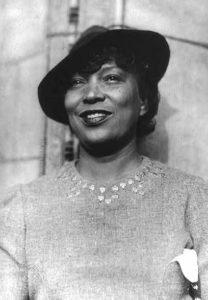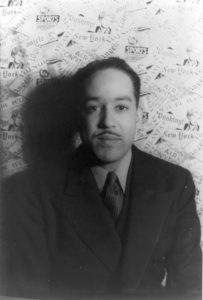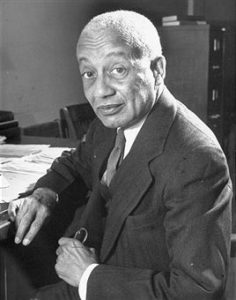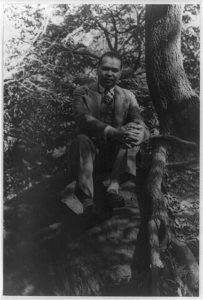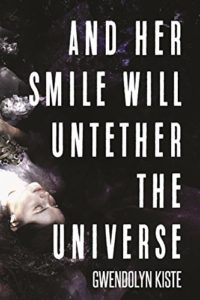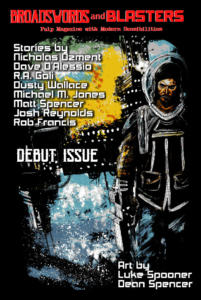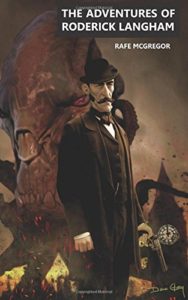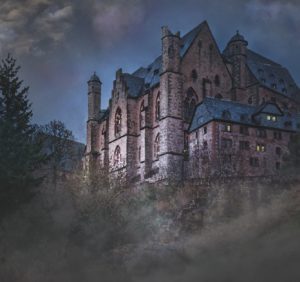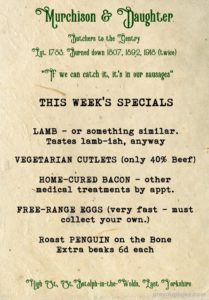Folk-horror and lore are much on our minds at the moment. For starters, we’ve been back in finwife territory, to the long coast of our youth. Imaginations were stirred by a bright stone in the sand, a skeletal fish in the wrack from the tides. Whilst the longdogs ploughed across the empty shore, we murmured of the drowned and the deep places.
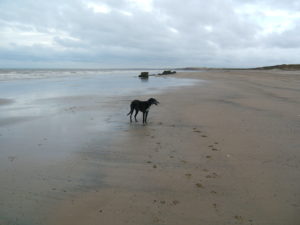
Django found a weed-encrusted World War 2 fortification, set in a turquoise pool. He was sniffing madly, trying to get to it, convinced that there were German spies lurking within; we suspected a dead crab. Maybe all of us were wrong.
Maybe behind barnacles and strings of chipped mussels, there crouched a finwife, far from Eynhallow. Unsure of the two large hunting beasts that circled her hiding place, she was waiting, waiting until a man came who might free her from her hag-shaped future.
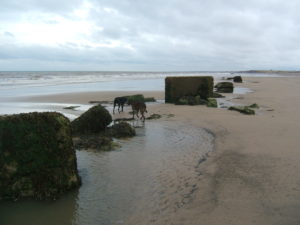
Not wishing to doom her, we moved on. The longdogs charged across the long sands, and drank in Auburn Beck, one of the last markers for the sunken village of Auburn, now under the waves. The North Sea is constant; the land is not…
Here’s a snippet for you:
Finwife Blues
Two walkers found a dead gull that afternoon. It was pinned to the side of a twisted hawthorn near the cliffs, its breast torn open and the small ribs spread wide. They had no idea what it meant, and so they left quickly to eat their packed lunches somewhere else. They preferred their countryside like their sandwiches, in small, tasteful bites.
One of the Miss Hetheringtons was sat outside the village shop when the vicar came for supplies. She smiled at him and rolled her way inside.
“More pilchards, reverend?”
“I’m afraid so, Miss Hetherington. And do you have any cod-liver oil left?”
The shop had many things. Small and dusty, its shelves were sparsely set with out-of-date cans and packets of stale biscuits, brands which had died out decades before. Like the pub, it offered one face to passers-by and another to the locals. The vicar had rarely found the Miss Hetheringtons out of stock of anything, if you knew how to ask.
He filled his shopping bag and after a pointless pleasantry or two made his way back up to the church. He was slow today, dragging the shopping home. His sleep had been broken, an odd night of dreams which he couldn’t recall. He felt like he’d already walked five miles before he started.
St Michael’s stood to the south of the village on the rolling hump called Leatherman Hill. He never asked about that. Kelda was waiting for him in the church porch, wearing a soft blue wool dress from one of the donations boxes. Her white-blonde hair was combed, long and silky, and she smiled at him. The sight of her sharp little teeth seemed normal by now.
“Pe-ter.”
She took the shopping from him as if it was an empty bag. He had been surprised at how strong she was. Though not as surprised when he had learned her true age. Jenny Mainprize had been careful when she whispered to the finwife and told her what to say. Kelda had been born, or spawned, he didn’t like to ask, in the wild sea currents near the Orkneys, one hundred and nineteen years ago.
“We can have our lunch.”
He ignored the way the wool stretched over her breasts. Maybe he had been lonely, but he was a man of God and had a duty here. He struggled with two fantasies at night. One was that of Kelda coming to comfort him in his over-sized, creaking bed, the other was of converting a finwife to the ways of the Anglican. Neither seemed likely.
They spent the afternoon exploring the churchyard, reading dates and memorials. Kelda seemed interested, and he found the gravestones a sign of normality. The village had funerals and burials like any other parish, though he had never conducted one. Some of the stones were caved with unlikely ages, but he could live with that.
“Crop-ton.” said Kelda, tracing a name. “Cun-ning Folk. Like old man.”
“Yes, Harry.”
She pressed nearer to him, a warmth in her thin body which came from the afternoon sun.
“He send me back?”
He put his arm around her. “No, I don’t think so. He’s a… good man.”
After dinner she lay on the sofa in the vicarage while he tried to draft a sermon. It was getting close to the autumn solstice, a time when he could pretend to be a proper vicar.
He finished his notes a little before midnight. Kelda was asleep, her bare feet twitching. The soft webbing between her toes was almost attractive.
One swift whisky and he lay down, fully clothed, on his bed. He was searching for sense in the Gospel according to John when he drifted off.
The sea was a lonely place. Townsend dreamed of vast abysses under the waves, of a watery emptiness where he swam, lost, on currents which carried him away from everything he cared about.
And then there was warmth in his dream, like the night before. He imagined hands stroking his body, comforting him. He moaned as slender limbs entwined him, and two large eyes shone with pleasure…
Later, when the moon was dim, a particular chalk boulder near the edge of the village was moved. No-one noticed.
You can find more about the North Sea coast lore and finfolk at the link here whale-road, widow-maker .
The Raj Revisited
Meanwhile, we’re busy with numerous other projects. Not only is Issue Two of Occult Detective Quarterly almost ready to go to the printers, but our concept anthology Their Coats All Red is being assembled as we scribble. The editors, old greydog and Matt Willis, now have a fantastic collection of tales, and are selecting the very best of those for 18thWall Productions.
Their Coats All Red: Dark Tales of Empire will contain strange stories which capture the feel of the high Victorian era. Stories such as those of soldiers marching under a parched South African noon to fight the Boer, soldiers who learn that Africa has its own purposes.
Young London ladies shipped with their husbands to quarters in Calcutta with little company save their Indian servants. Traders and planters in Malaya, fighting the monsoon shadows, and the forlorn garrisons in the Sudan. The sailors of the West Africa squadron, seizing slave ships off the Gold Coast.
The English woman who finds the beliefs of the local people to be far darker than anything in her book of ghost stories. The Zulu who trades his iklwa for a Martini rifle. The Egyptian who finds her officer lover will not acknowledge her in the street…
This will be an anthology with a difference, dwelling muchly on the horror and folklore of those peoples under the Empire. We’re rather pleased. And though there is no finwife, there are likely to be some different watery dooms awaiting you within.
We shall speak again soon, dear listener…


